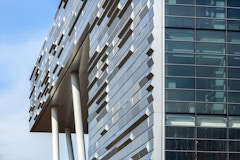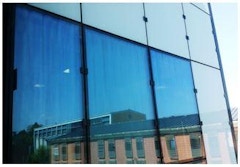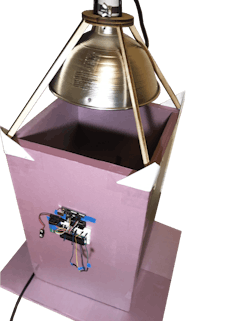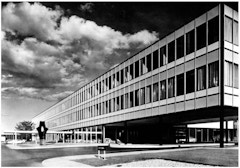
Mixed Reality in Facade Education
Developments in performative computational analysis, mass customization, and complex form manipulation revolutionized building envelope design

Developments in performative computational analysis, mass customization, and complex form manipulation revolutionized building envelope design

Large format, steel-stud framed “megapanel” facades with rainscreen cladding create uniquely complicated requirements for digital documentation and


What does the fourth industrial revolution mean to the design and engineering of facades of the future? We are experiencing a global technological

In the vein of mass production, manufacturers leverage repeatable parts and modular construction in an effort to maximize quality control while

Highly transformable materials can be used as adaptive exterior shading systems by leveraging the relationship between external stimuli (heat) and

An innovative lightweight ceramic precast composite panel is introduced in this paper that offers the unique benefits of prefabricated off-site

Anisotropy is also known as Brewster marks, quench marks, strain pattern, leopard spots, Iridescence, etc. Although anisotropy is inevitable when


The global increase in atmospheric temperature rise combined with the rapid growth of previously underdeveloped climate zones presents a growing need

Healthcare projects in northern California require specialized knowledge to navigate regulation, technological advancements, and project execution

Aesthetic and technical capabilities of facade design have become seemingly endless as building technologies progress. While the capacity to address
What is the difference between artwork and facadework? How can artwork be integrated into building façades? What are the possibilities when a façade


Architects today must explore alternative enclosure materials to meet evolving energy codes and embodied carbon regulations. Terra cotta has been

Providing a unique and integral cladding/envelope solution suited for high-rise buildings has been an inherent challenge for this building typology

The performative and visual aspects of curved forming/bending thin “formable” planar materials is explored. Early tests for deflection indicate that


Mid-century through 1980’s buildings with lock-strip or “zipper-gasket” glazing systems are an ever present part of the urban landscape in many

The trend towards modular and unitized facades continues to grow in popularity due largely in part to the efficiencies gained in terms of cost and